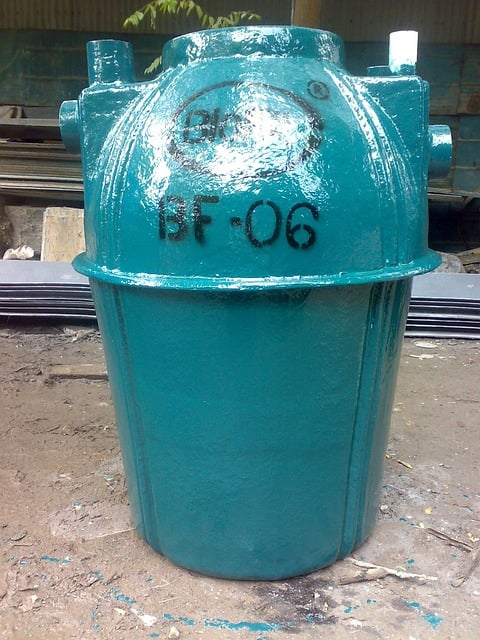Regular septic system maintenance is vital to prevent failures caused by waste buildup, aging components, and environmental factors. This includes annual inspections, pumping every 3-5 years, quarterly testing, and simple lifestyle adjustments like avoiding flushing non-biodegradable items. By adhering to these practices, homeowners can protect groundwater, maintain pH balance, extend tank lifespan, and prevent costly repairs while upholding environmental standards.
“Unraveling the mysteries of septic system failures is key to maintaining a healthy environment and ensuring your home’s plumbing works seamlessly. This comprehensive guide explores the common causes behind these disruptions, offering insights into the intricate world of on-site wastewater treatment.
We’ll delve into the critical aspect of regular septic system maintenance practices, providing practical tips for homeowners. Additionally, we present preventive measures to safeguard against unexpected failures, emphasizing the importance of proactive care in optimizing your septic system’s lifespan and efficiency.”
- Understanding Septic System Failures: Common Causes
- Regular Septic System Maintenance Practices
- Preventive Measures to Avoid System Disruptions
Understanding Septic System Failures: Common Causes

Septic system failures are common issues that can arise from various causes, often stemming from poor maintenance or external factors. Understanding these root causes is essential for homeowners to prevent costly repairs and ensure their systems operate efficiently. One of the primary reasons for septic tank malfunctions is a buildup of solid waste and debris, which clogs pipes and prevents proper sewage flow. Regular pumping and cleaning of the tank are crucial measures for maintaining optimal performance.
Another frequent cause of failure is damage or corrosion to the septic tank itself, pipes, or pumps due to age, poor installation, or exposure to extreme weather conditions. Leaks and cracks can lead to contamination of groundwater and require immediate attention. Regular inspections, especially for older systems, are key to identifying potential issues early on. Septic system maintenance also involves monitoring levels of bacteria and pH balance, as imbalances can signal problems and disrupt the natural processes necessary for effective waste treatment.
Regular Septic System Maintenance Practices

Regular septic system maintenance is an essential practice for homeowners with septic tanks. It involves a combination of preventive measures and routine checks to ensure optimal performance and longevity of the system. One of the key components is regular pumping, typically recommended every 3-5 years, depending on usage and tank size. During pumping, solids accumulated in the tank are removed, preventing them from entering the drain field and potentially clogging pipes.
In addition to pumping, inspection and cleaning of the septic tank and drain field should be conducted annually. This includes checking for leaks, examining pipes for damage or corrosion, and ensuring that the drain field is free from obstructions. Timely identification and repair of issues can prevent major failures and costly repairs. Regular maintenance also involves testing the system’s effluent quality to ensure it meets environmental standards and prevents pollution of nearby water sources.
Preventive Measures to Avoid System Disruptions

Regular septic system maintenance is key to preventing disruptions and costly repairs. Schedule routine inspections, ideally annually or bi-annually, with a professional to assess the overall health of your system. During these visits, they can check for any signs of damage, leaks, or blockages that may lead to failure. Additionally, pumping the septic tank as recommended (typically every 3-5 years) removes solid waste buildup, ensuring optimal performance.
Implementing simple lifestyle changes at home can also go a long way in maintaining your septic system. Avoid flushing non-biodegradable materials down the toilet, such as wipes, tampons, or sanitary napkins. Limit the use of high-flow fixtures and appliances, like washing machines and dishwashers, during heavy rain or when the system is already stressed due to increased water usage. Regularly cleaning and repairing plumbing leaks can also reduce the amount of water entering the septic tank, easing the workload on the entire system.
In light of the above discussions, it’s clear that proactive measures and regular septic system maintenance are key to preventing failures. By understanding common causes like tree root intrusions, solid waste disposal, and lack of maintenance, homeowners can take adequate preventive steps. Implementing routine inspections, pumping, and proper disposal habits can significantly extend the lifespan of their septic systems. Embracing these practices not only saves costs but also ensures a healthier environment. Remember that proactive care is always more effective than reactive repairs when it comes to your septic system maintenance.
